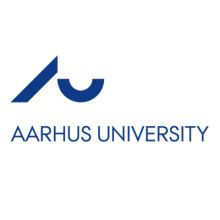A small band of “elite” scientists is taking a larger share of citations, possibly because of the way that research is organised and funded through larger teams of researchers, a new paper suggests.
According to the study of 26 million research articles published over a 15-year period, the top 1 per cent most-cited authors in natural, health and agricultural sciences accounted for more than a fifth (21 per cent) of citations in 2015, up from 14 per cent in 2000.
This increase in “citation inequality” over the period has coincided with a general rise in collaboration and growing numbers of authors on papers, the researchers from Denmark point out.
But while the most-cited scientists have still increased their publication rate, other researchers are publishing slightly fewer papers due to this trend.
“While increasing collaboration and full-count publication rates go hand in hand for the top 1 per cent most cited, ordinary scientists are engaging in more and larger collaborations over time, but publishing slightly less,” the paper, published in the Proceedings of the National Academy of Sciences, says.
It adds that the “rise in citation concentration should be understood in the context of changing dynamics in the career trajectories of science”, with junior researchers often supporting projects led by others.
This also “aligns with evidence suggesting accelerating trends toward funding concentration at the individual level”.
“Highly cited authors have better odds of winning grants, allowing them to expand their research laboratories and collaborative networks, ultimately leading to increased (full-count) publication and citation rates,” the paper says.
“In an evaluative system, where funding and hiring decisions are heavily informed by bibliometric indices, we may expect to see further increases in both funding, publication and citation concentration.”
The analysis also finds that authors in the citation elite “increasingly reside in western Europe and Australasia, while the United States has decreased its concentration of top-cited scientists”. This “aligns with recent research suggesting changing power relations in global science”, the paper adds.
However, despite these changes, top institutions in the US and UK “still employ the largest numbers and concentrations of elite researchers, and the stark inequalities in institution-level citation distributions observed in this study reflect the continuous dominance of elite universities in the global production of scientific knowledge”.
Mathias Nielsen, associate professor in the department of sociology at the University of Copenhagen and one of the article’s co-authors, said that while the study could not make a “mechanistic, causal conclusion” about the link between seniority in science and citation success, “it is well known that funding sizes (and principal investigator status) are positively correlated with publication and citation outputs”.
“In a nutshell, what we’re observing is the Matthew effect in action – a process where success breeds success.”
His co-author Jens Anderson, of the Danish Centre for Studies in Research and Research Policy at Aarhus University, said that perhaps the most surprising finding was just how large the gap was between the top 1 per cent most-cited researchers and other scientists.
This was also a further reminder of why citations were “a poor and very context-specific proxy of an [individual] scientist’s contribution or impact”.
“We recommend against using such indicators for individual assessments, whether it be for grants, promotions or anything else, but they can be useful tools provide insights into the use of a scientist’s work,” Dr Anderson added.
Register to continue
Why register?
- Registration is free and only takes a moment
- Once registered, you can read 3 articles a month
- Sign up for our newsletter
Subscribe
Or subscribe for unlimited access to:
- Unlimited access to news, views, insights & reviews
- Digital editions
- Digital access to THE’s university and college rankings analysis
Already registered or a current subscriber? Login










